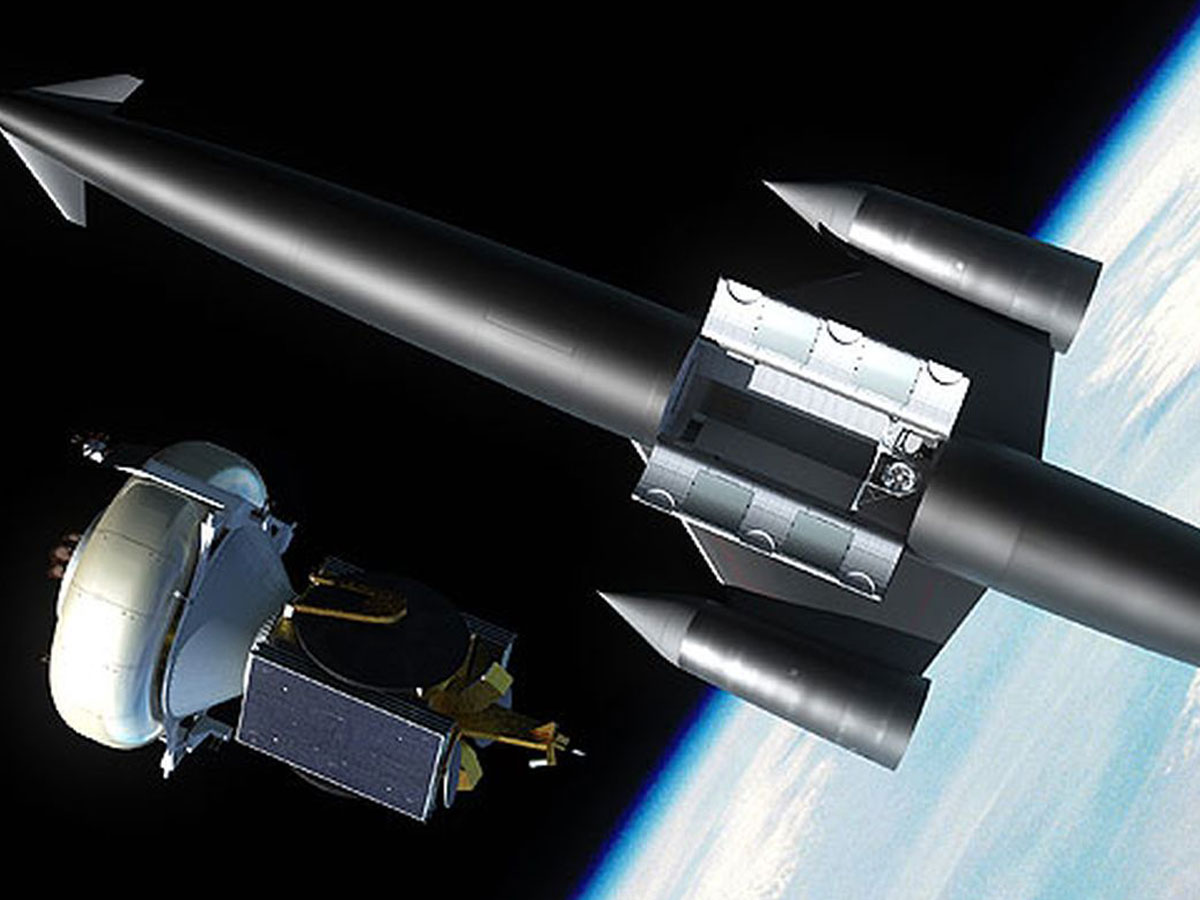Skylon – a future spaceplane

The SKYLON spaceplane is a single-stage orbit concept vehicle currently under development by Reaction Engines Ltd in the United Kingdom. It’s designed to take off and land on a runway. Being unmanned it uses innovative dual-mode SABRE engines. These engines have air-breathing and rocket modes and have evolved from the liquid air-cooled engine designs of the 1980s and the HOTOL project.
The European Space Agency has reviewed the concept and found no technical or economic impediments. The UK government has pledged 60 million euros for its development.
What is a spaceplane?
A spaceplane is a hybrid between a conventional atmospheric aircraft and a craft that can manoeuvre in outer space.
Design
It could carry 17 tonnes (37,000 lb) of cargo to an equatorial low Earth orbit (LEO); up to 11 tonnes (24,000 lb) to the International Space Station, almost 45% more than the capacity of the European Space Agency’s Automated Transfer Vehicle;[2] or 7.3 tonnes (16,000 lb) to Geosynchronous Transfer Orbit (GTO), over 24% more than SpaceX Falcon 9 launch vehicle in reusable mode (as of 2018
The design of the Skylon D1 features a large cylindrical payload bay, 13 m (42 ft 8 in) long and 4.8m (15 ft 9 in) in diameter. It is designed to be comparable with current payload dimensions, and able to support the containerisation of payloads that Reaction Engines envisions being produced in the future.
To an equatorial orbit, Skylon could deliver 15 t (33,000 lb) to a 300 km (190 mi) altitude or 11 t (24,000 lb) to a 600 km (370 mi) altitude.
Operationally, it is envisioned for the non-crewed Skylon to take off from a specially strengthened runway, gain altitude in a fashion akin to a conventional aeroplane and perform an ascent at very high speeds, in excess of five times the speed of sound (6,100 km/h or 3,800 mph), to attain a peak altitude of roughly 28 kilometres (92,000 ft), on the edge of low earth orbit (LEO), where payloads would typically be launched prior to the vehicle’s re-entry into the atmosphere.
At Mach 5 and an altitude of 20km (12 miles), the engine stops breathing the air, closes its inlets, and starts to burn liquid oxygen mixed with its hydrogen fuel to reach speeds of Mach 25.
In October 2019, Mach 5 was reached. The precooler successfully “quenched” air flowing into the machine at more than 1,000C (1,800F) in less than 1/20th of a second.
The idea is for the engine to carry the craft to the correct velocity in the air, and then finally into space with a boost from the craft’s onboard storage of oxygen.
The currently proposed Skylon model D1 is a large vehicle, possessing a length of 83.13 metres (272 ft 9 in) and a diameter of 6.30 metres (20 ft 8 in). The fuselage of the Skylon is expected to be a silicon carbide reinforced titanium space frame; a light and strong structure that supports the weight of the aluminium fuel tanks and to which the ceramic skin is attached. Multiple layers of titanium foil thermal insulation are sandwiched between the skin and frame to protect the inside of Skylon from the heat of hypersonic flight and the intense heat of re-entry.
At the moment the company is focussing on the development of the main propulsion system. The testbed engine is currently under development at a site at the foot of the Rocky Mountains, in Colorado, and has achieved simulated speeds of Mach 3.3.
The endeavour is backed by some of the biggest names in aerospace including Rolls-Royce, Boeing, British Aerospace, as well as the UK and European space agencies.
The engine
The SABRE engine is capable of operating either as a jet or a rocket, powered aircraft, Reaction Engines claims, at five times the speed of sound within Earth atmosphere or at 25 times the speed of sound flying directly into orbit. This is achieved engine’s by the pre-cooler, which Reaction Engines claims will chill air from over 1000º C (1832º F) to -150º C (-238º F) in under 1/100th of a second.
The latest tests of the SABRE precooler represent a major step toward making the engine operational.
The key to this is the precooler. By using recirculated cryogenic hydrogen fuel to cool incoming air, the precooler can quench the hypersonic airflow down from a temperature of 1,000° C (1,832° F) to -150° C (-302° F) in 1/20th of a second.
UK-based Reaction Engines Ltd has been working on SABRE for several years, with the concept being independently reviewed by ESA in 2010.
Funding
Speaking in June 2011, Reaction estimated that it would require ultimately $12 billion to achieve an operational configuration, which was then estimated to be achieved around 2020, dependent on funding.
During February 2009, following on from a series of extended discussions with the British National Space Centre (which later became the UK Space Agency), it was announced that a major funding agreement had been established between the British National Space Centre, ESA and Reaction, committing €1 million ($1.28 million) for the purpose of producing a demonstration engine for the Skylon programme by 2011.
The initiative, known as the Technology Demonstration Programme, was scheduled to last approximately 2.5 years, during which further financing in the form of €1 million was made available by the ESA.
As a consequence of the enactment of the Technology Demonstration Programme, Reaction was able to transition from a Technology Readiness Level (TRL) of 2/3 up to 4/5 within a matter of months.[
Specifications (Skylon D1)
Data from the Skylon User Manual[8]
General characteristics
Crew: Zero
The proposed Skylon Personnel/Logistics Module (SPLM) has provision for a captain.
Capacity: 15,000 kg (33,000 lb) of cargo
up to 24 passengers in the SPLM.
Potential for up to 30 passengers (in a special passenger module)
Length: 83.133 m (272 ft 9 in)
Wingspan: 26.818 m (88 ft 0 in)
Height: 13.5 m (44 ft 3 in)
Empty weight: 53,400 kg (117,727 lb)
Gross weight: 325,000 kg (716,502 lb)
Powerplant: 2 × SABRE 4 liquid air cycle engine, 2,000 kN (450,000 lbf) thrust each [60]
Specific impulse:
4,100–9,200 s (40,000–90,000 N‑s/kg) air-breathing
460 s (4,500 N‑s/kg) rocket [60]
Performance
Maximum speed: Mach 5.5 air-breathing
Service ceiling: 28,500 m (93,500 ft) air-breathing




